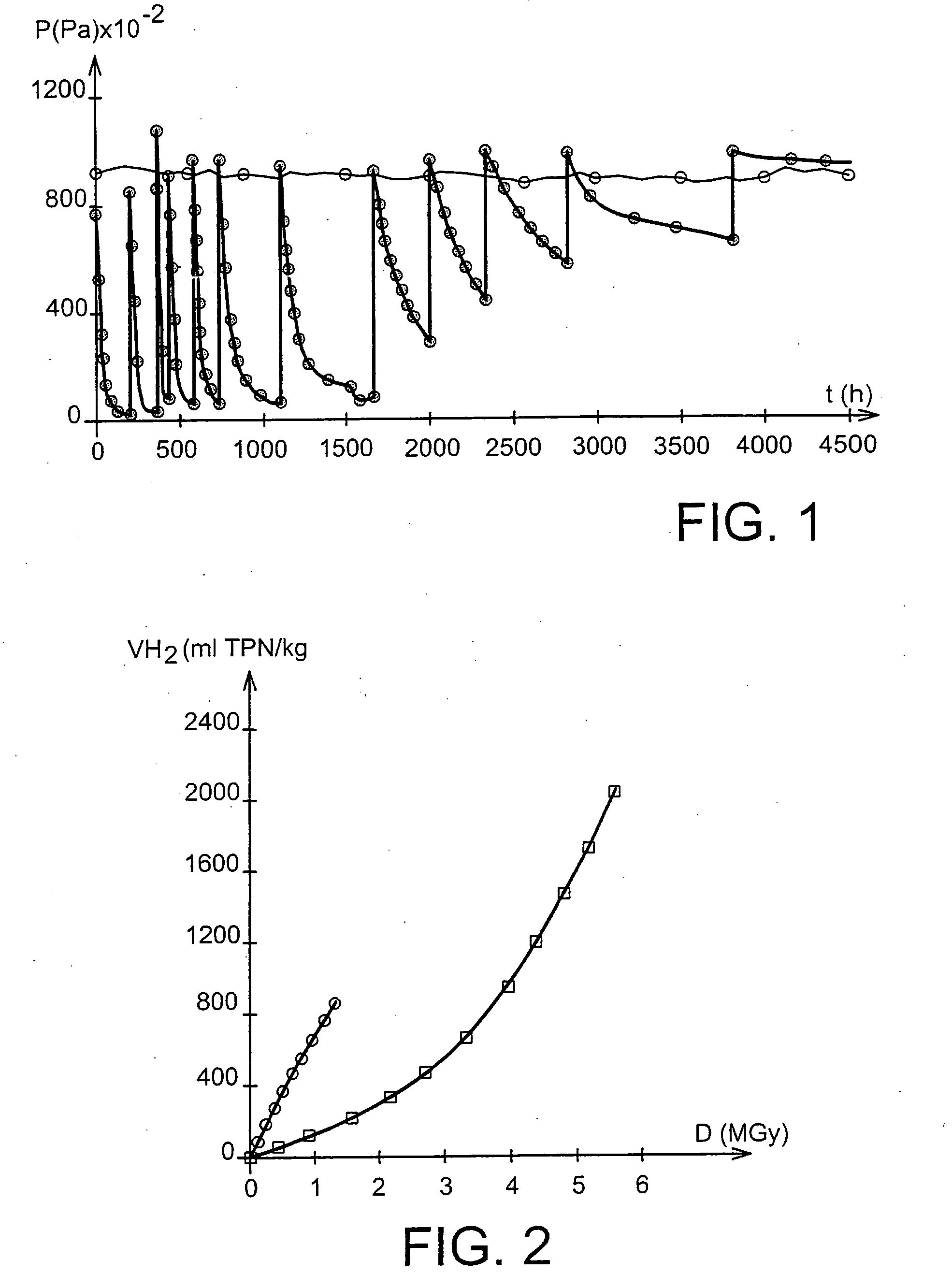Hydrogen trapper compound, method for the production and uses thereof
- Summary
- Abstract
- Description
- Claims
- Application Information
AI Technical Summary
Benefits of technology
Problems solved by technology
Method used
Image
Examples
example 1
Hydrogen-Trapping Experiment, Using Direct Contact with the Pulverulent Compound
[0098] In this example, a compound of the COS(OH) form was synthesized in the laboratory by mixing, with magnetic stirring, two aqueous solutions, namely a cobalt sulphate (97 wt % purity) solution and a sodium sulphide (35 wt % purity) solution in S / Co proportions of 1.5.
[0099] The pH of the solutions, initially 5.1 and 13.3 respectively, was not adjusted. The pH of the final suspension was not adjusted either.
[0100] In this experiment, part of the precipitate obtained, which was black in colour, was dried at 100° C. after filtration and washing with water. It was then ground so as to obtain a powder with a particle size ranging from 0.7 to 15 μm.
[0101] Ten grams of the compound in the dry CoS(OH) form, in the pulverulent state, were placed in a 100 ml sealed cell at ambient temperature (22±3° C.) in a pure hydrogen atmosphere.
[0102] Consumption of hydrogen by the compound was monitored experimenta...
example 2
Hydrogen-Trapping Experiment, the Hydrogen being Generated In Situ by Radiolysis, Using a Compound of the Present Invention Encapsulated in a Bitumen
[0108] Part of the compound in suspension, the synthesis of which was described in Example 1 above, and to which an inert barium sulphate mineral filler was added, was intimately mixed with molten bitumen at 140° C. until complete evaporation of the water and the formation of a homogeneous mixture containing 10% salts (wt % / encapsulant), including 0.8% cobalt (wt % / encapsulant).
[0109] The bitumen encapsulant obtained comprised the compound of the invention in COS(OH) form with a content of 1.5% Co / encapsulant (wt %).
[0110] The sole function of the barium sulphate salt was to increase the mineral filler content in the encapsulant so as to obtain better dispersion and uniformity of the compound of the present invention within the encapsulant.
[0111] The material was a bitumen typically used in the encapsulation of low-level and medium-...
PUM
| Property | Measurement | Unit |
|---|---|---|
| Fraction | aaaaa | aaaaa |
| Acidity | aaaaa | aaaaa |
| Mass | aaaaa | aaaaa |
Abstract
Description
Claims
Application Information
 Login to View More
Login to View More - R&D
- Intellectual Property
- Life Sciences
- Materials
- Tech Scout
- Unparalleled Data Quality
- Higher Quality Content
- 60% Fewer Hallucinations
Browse by: Latest US Patents, China's latest patents, Technical Efficacy Thesaurus, Application Domain, Technology Topic, Popular Technical Reports.
© 2025 PatSnap. All rights reserved.Legal|Privacy policy|Modern Slavery Act Transparency Statement|Sitemap|About US| Contact US: help@patsnap.com

